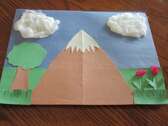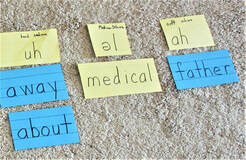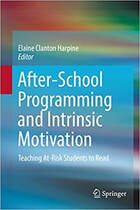
From the White House to the streets, some people are clamoring to just reopen everything. Regardless how many cities and states are still showing that new coronavirus cases are soaring upward, some yell, “reopen anyway.” Others ignore the fact that people are still dying. Many turn a blind eye to the statistical data-driven predictions of a returning second wave of the coronavirus pandemic. Yes, some areas are showing mild improvement, but many are not. Honestly, no one can predict exactly what will happen if we reopen or even what is the best path to take toward reopening. Unfortunately, closing our eyes and pretending that the coronavirus has gone away isn’t our smartest decision.
Caught in the middle of this panic-stricken approach to overcoming the coronavirus pandemic lie our children and our public school system. As the end of the school year draws near, school officials, teachers, parents, and even students are asking: What should we do in the fall?
There are almost as many responses as there are people asking the question. Some of the responses are intelligent. Some are just plain foolish and dangerous. I am not swayed by the noise from the streets or the whims of vote-hungry politicians.
In education, we consider it essential to teach critical thinking skills to students. Critical thinking is defined as analyzing facts and statements to make the best decision or find the best solution to a problem. We need critical thinking skills every day of our life. We desperately need to apply our critical thinking skills right now. We should be using critical thinking to make good decisions, to understand the consequences of those decisions, and to solve our coronavirus problems.
Are we using critical thinking during the coronavirus pandemic?
No, our decisions are being driven by those who yell the loudest.
I am a psychologist. My doctoral degree is in educational psychology, counseling. I specialize in group- centered prevention for children and teens. I began focusing on reading failure because of the psychological damage and mental health issues that arose with children and teens who failed to learn to read in school. So, from me, you will always get a scientific, data-driven response. Science is not perfect, but I believe that if we listen to scientists, evaluate what they say, and analyze the implications of research for our life, we will have a healthier and better lifestyle for all. In short, we should make our decisions in the school system based on critical thinking.
As I read the research data, it is telling us that it is not safe to reopen schools in the fall. Why? I’ll highlight three main reasons: (1) coronavirus is dangerous even for children, (2) social distancing and safe coronavirus health practices are not possible with children and teens in our present school settings, and (3) keeping schools closed will help reduce the spread of coronavirus across the nation.
- Coronavirus is dangerous for children. It was once believed that children were not as severely affected by coronavirus as adults. Yet, every day we are seeing more and more cases of children being severely affected by coronavirus; some even dying from coronavirus complications. There have been 161 reported cases of this mysterious link with coronavirus just in New York. Documented cases have been reported in New York, Colorado, Indiana, and Florida. Is our desperation to reopen worth risking our children’s lives?
- Social distancing and safe coronavirus health practices are not possible with children and teens in our present school settings. If you work in the schools and have seen school buses transport children, please tell me how you are going to practice social distancing on school buses. Not all parents can drive their children to school every day. Most buses are stuffed end to end, and with today’s economy, schools certainly do not have the money to go out and buy more school buses. The truth is that it’s not possible to practice social distancing on a school bus, a playground, the gym locker room, or even the school cafeteria. I’m not even sure teachers can manage in the classroom. Yes, school buses, playgrounds, restrooms, and cafeterias (and let’s not forget the classroom) must all be made safe and must practice social distancing if we are to start school back in the fall. So, what happens if we just ignore social distancing at school? Here's what one major study found out:
- “The study, published in the journal Health Affairs, looked at the policies mandating social distancing, and found that the longer a measure was in effect the slower the daily growth rate of covid-19, …. For social distancing policies that lasted at least 16 to 20 days, the daily rate of infection dropped by more than 9 percentage points, according to the study. Policies lasting 15 days and less also saw declines in the daily infection rate, researchers found. Such social distancing measures, mandated by 95 percent of the country, include shelter-in-place orders, school closures, bans on large events and the closure of gyms, bars and restaurants.… Places with no social distancing orders were at substantially higher risk for infection."
So, ignoring social distancing is like saying, “Yes, I want coronavirus to spread.” Is that what we really want? Do we really want to ignore the dangers of removing social distancing from our schools, our communities, and our daily lives? True social distancing in schools is impossible under our present educational system. To open the doors and send children back to school without effective social distancing is just inviting more children and adults to become sick and possibly even die.
- Also, “…if nobody followed these (social distancing) guidelines at all, the number of new infections would continue to rise exponentially, with the number of infected people doubling every few days. That’s the absolute worst-case scenario, where nobody changes their behavior at all.”
- Keeping schools closed will help reduce the spread of coronavirus. So, if social
- distancing at school is just not practical or achievable and if coronavirus is in fact dangerous for children as well as adults and if we know that to reopen the schools will increase the risk of coronavirus continuing and spreading across the nation, then why are we doing it?
As Science Magazine points out, “Proactive school closures -- closing schools before there is a case there-- have been shown to be one of the most powerful non-pharmaceutical interventions that we can deploy.”
Yes, if you turn to the Internet, you can find many people saying that opening the schools is not a threat nor will it increase the coronavirus. However, you can find anything on the Internet. Even savvy four-year-olds have been known to add ideas onto the Internet. Check and evaluate the sources. I give links for all my sources so that you can read and check the information. I will never ask you just to take my word for something. Think. Analyze. Use your critical thinking skills.
From me, you will receive the best scientific information I can find. I do not listen to politicians, but I do understand the desperation to reopen the schools so that the schools may provide free childcare for those who need to go back to work. Yet, if it only prolongs the duration or increases the severity of coronavirus, then opening the schools is not a good solution for us as a nation.
I have presented the best scientific research I can find in order to enable us to use our critical thinking skills so that we may make intelligent decisions. Therefore, should we open schools this fall? I think the answer needs to be, no. So, what are we to do? We must look at alternatives to reopening schools. This is just as businesspeople who can successfully work from home during the pandemic should work from home. All students who can successfully learn from home should do so as well. Yes, I know that we will need to make some special provisions for children whose parents must go to work, but, if we can reduce the spread of coronavirus by using online education techniques rather than opening the schools, I believe we should do so in the fall. This summer, we have time to plan and organize an online approach.
In psychology, one of our main goals is always to help children, teens, and families have a healthier, happier, and more productive life. I plan to spend my summer exploring Internet opportunities and options. I plan to pursue two areas of research:
What can parents do to help their children prepare for whatever form of schooling is offered in the fall?
What is the best way to teach our children this fall?
What can I do this summer to help my child be ready for the fall?
As promised, I’ve been compiling a list of online resources. I only recommend resources that I have been able to check and/or that I have used. You need to be careful. There’s lots of bad information on the Internet as well as lots of good information.
When I decided to embark upon compiling a list of free high-quality teaching resources, I did not realize that it would be such a daunting task. I very naïvely thought that I could just look up some topics and find good teaching material. Wrong. Yes, I can find lots and lots of material, but I was looking for high-quality, effective teaching material. That turned out to be a totally different task. Today I will offer Part I of my list, and I promise to add to it as I find new material.
Part I: Free High-Quality Teaching Resources
- Start with an organizational system: If you have not explored Schoology, I suggest you begin with their free site for parents, students, and teachers. It is a wonderful way to organize your lessons, even for teaching from home. Students can go on the site and easily follow the lessons you have organized.
- I sent my first two suggestions for online resources in my blog post of 3-3-202: Scholastic magazine and National Geographic videos. Those are still two of my highest recommendations. Yes, Scholastic only offers four weeks for free, but if you have not taken advantage of those four weeks of material, I highly suggest you do so. They are wonderful. No one beats National Geographic for videos and for research material about animals and nature.
- Another free resource that I find very useful is BrainPOP. This learning resource is normally not free, but because of the coronavirus pandemic, they are extending this resource to parents at home. It is excellent and interesting. It offers both easy and advanced learning videos, interactive quizzes, and all types of hands on learning extensions. If you are working with your child at home or if you are a teacher sending lessons home, this resource is a must.
- NASA is a terrific resource for the classroom and for parents at home, and, in case you haven’t heard, we are just in time for the first launch by SpaceX. They are promising full coverage of the launch. It will be the first launch of astronauts from American soil in nine years. Don’t miss it. There’s also lots of material that parents can use, and NASA's videos are exciting history to explore. Children love to make paper rockets, and they are so easy to make. Just wrap paper around an empty water bottle or paper towel tube, then decorate.
- I do not often recommend online zoos because their websites are not always easy to navigate. However, the San Diego Zoo offers an exciting and interactive website. Make sure your children check out the stories and special videos, especially the cheetah track. I particularly enjoyed learning about the rescued animals. You can do all kinds of activities about animals from the information children can obtain from the videos and stories on this site.

- Another interesting site is from Ellis Island. Yes, it is from Scholastic and a wonderful resource. The pictures and videos make it seem as if you’re actually touring the museum. I also added a present-day picture when I was using it because I wanted my grandson to understand what Ellis Island looked like then and now. Explore your family. Do you have ancestors who came to the United States through Ellis Island? Perhaps you and your child would like to write a family history.
- Weekends are a perfect time for the family to do some museum virtual tours. I’ve mentioned these before, but they are still a wonderful family activity. If you are not the museum enthusiast, there are other virtual field trips--outdoor and historical.
- There are two newsworthy items on recycling: first, making food containers from plants and second, making masks from recycled plastic. You can turn this into a learning experience by taking scraps of paper and making a picture. Recycle and reuse.
- If you like history and live actors, Monticello offers fabulous live stream video sessions with an actor playing the part of Thomas Jefferson. The actor is very good.
- If you are looking for scientific information and hands-on activities, NASA offers an excellent site about climate.

Is there a better way to educate our children this fall?
As I have already stated, I strongly believe we should not reopen schools in the fall. Reopening would be a mistake. Therefore, this summer we should be using this time to redesign our educational programs for online education and to retrain our teachers so that they are able to do a more effective job with online education. Yes, let me clarify, some teachers did a fantastic job this spring teaching their students online, even when it was a last-minute requirement. We also must acknowledge that some teachers did not; therefore, some students are behind their grade level because of the inadequate teaching that was provided during the school closure. If we prepare this summer, we can do better in the fall.
I have been teaching four hours a day on Skype during the school closure this spring. It is a completely different way to teach from the methods that I use at my reading clinic. I do not believe that online teaching will ever be as effective as my hands-on reading clinic, but it is not safe to offer my group-centered reading clinic during the coronavirus pandemic. Therefore, I plan to spend the summer developing new online reading programs to offer in the fall because I do not think it is safe to reopen the reading clinic. However, I want to continue helping students who struggle. My reading programs have been very successful. We have even had students move up four grade levels in one year. Now, I need to meet the challenge of helping children from a distance online. Stay tuned, I plan to share what I learn.



 RSS Feed
RSS Feed
